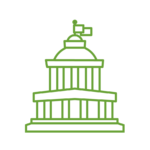Affordability Determinations
Employee Benefits
Affordability Determinations
The Employer Shared Responsibility provisions of the Affordable Care Act require applicable large employers (ALEs) to offer their full-time employees1 affordable minimum value coverage2 to avoid potential employer-shared responsibility payments/penalties (ESRPs). ALEs are employers with an average workforce of at least 50 full-time (or equivalent) employees in the preceding calendar year. These provisions provide that employer-offered coverage is considered “affordable” if the required employee contribution amount for the least expensive employee-only level of coverage providing minimum value does not exceed an indexed percentage (adjusted annually) of an individual employee’s household income for a given year.
To help employers determine whether the coverage they offer will be affordable to employees without knowing their household income, the IRS issued regulations3 providing employers with three affordability “safe harbors” that ALEs can use to determine if their plan would be considered affordable for their full-time employees. These three safe harbors are the federal poverty line (FPL) safe harbor, the Form W-2 safe harbor and the rate of pay safe harbor.
An ALE is not required to use a safe harbor to determine affordability, nor are they required to use only one safe harbor for their entire employee population.4 If an employer chooses to utilize an affordability safe harbor method, an employer may apply different affordability safe harbors to any “reasonable category of employees, provided it does so on a uniform and consistent basis for all employees in a category.”5 Reasonable categories of employees can include “specified job categories, nature of compensation (hourly or salary), geographic location, and similar bona fide business criteria.”6
Federal Poverty Line Safe Harbor
The federal poverty line safe harbor allows an employer to use the single individual poverty limit set annually by the Department of Health and Human Services7 to determine whether the health plan would be considered affordable under the ESRP rules.
Under the federal poverty line safe harbor, an employer’s offer of coverage is considered affordable when the monthly required employee contribution for the least expensive employee-only coverage providing minimum value does not exceed an indexed percentage (adjusted annually) of the applicable FPL for a single individual. This number is divided by twelve, converting the annual federal poverty line amount to a monthly amount. The U.S. mainland, Alaska and Hawaii are subject to separate FPL amounts.
If the employee’s monthly contribution is less than or equal to this amount, the employer is considered to have offered affordable coverage to the employee under the FPL safe harbor.
Annual FPL guidelines are typically released in January of a given year, after calendar year plan years have already begun. The regulations allow employers to set affordability based on the FPL guidelines in effect within six months before the first day of the plan year.8
The FPL safe harbor is generally considered the simplest safe harbor method to administer. As affordability is based on a poverty-related figure, it also generally requires the greatest employer contribution.
1 Treas. Reg. § 54.4980H-1(a)(21).
2 In general, a group medical plan provides minimum value coverage if (1) the plan’s share of the total allowed cost of benefits provided to an employee is at least 60% and (2) the plan provides substantial coverage of inpatient hospital services and physician services. Treas. Reg. § 1.36B-6(a).
3 Treas. Reg. § 54.4980H-5(e)(2).
4 Treas. Reg. § 54.4980H-5(e)(2)(i).
5 Id.
6 Id.
7 https://aspe.hhs.gov/topics/poverty-economic-mobility/poverty-guidelines.
8 79 Fed. Reg. 8543, 8565 (Feb. 12, 2014).

